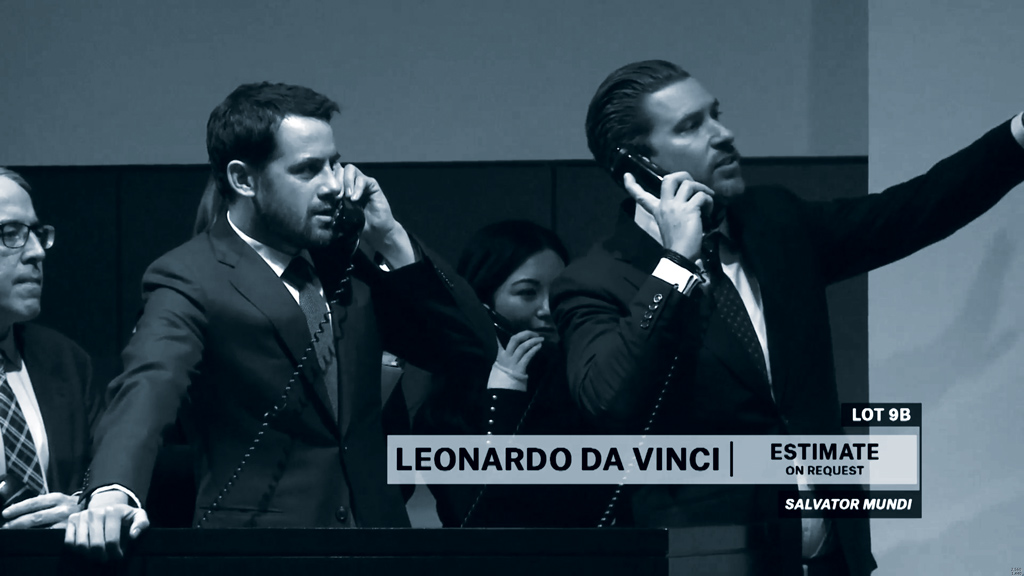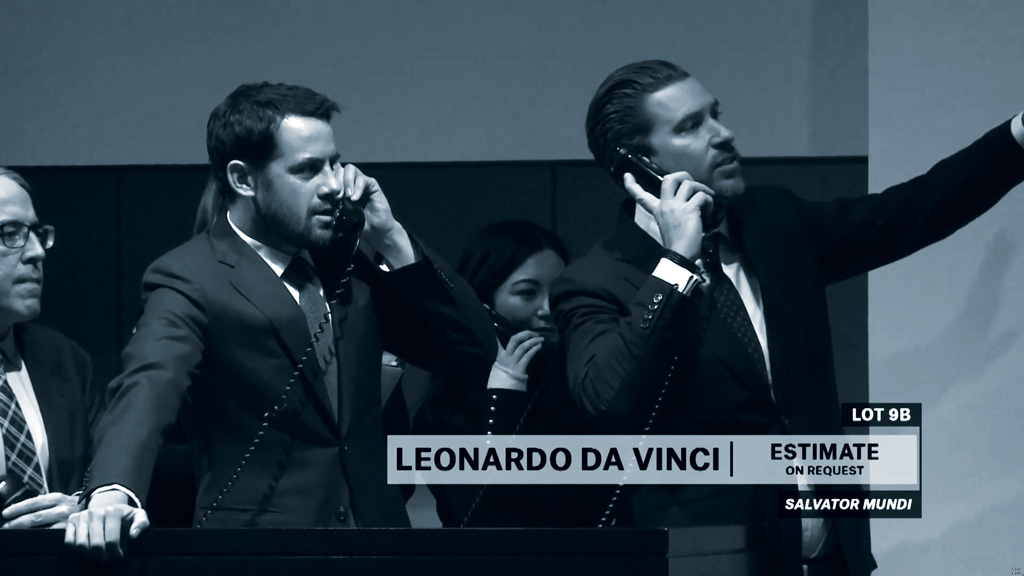[ad_1]

Loïc Gouzer and Alex Rotter while the bidding for Salvator Mundi was underway at Christie’s.
CHRISTIE’S IMAGES LTD. 2018
The world’s collective jaw dropped when Salvator Mundi, the rediscovered Leonardo da Vinci painting from the collection of “Top 200” collector Dmitry Rybolovlev, sold for $450.3 million last November to an anonymous phone bidder at Christie’s in New York, becoming the most expensive artwork ever to sell at auction. The single lot was responsible for more than half the $785 million total brought in by the night’s sale of 49 artworks. The price eclipsed the gross domestic product of the Polynesian Kingdom of Tonga.
The heavily restored painting has been officially attributed to Leonardo and was included in an exhibition at London’s National Gallery, but not all scholars agree on how much of it was painted by the master. This past summer, Matthew Landrus, an art historian at Oxford University, said he thinks a good portion of it was done by Leonardo’s assistant, Bernardino Luini. But the big question after the gavel dropped was: who bought it?

Leonardo da Vinci, Salvator Mundi, ca. 1500.
A few weeks after the sale, the New York Times reported that the buyer was Bader bin Abdullah bin Farhan Al Saud, a Saudi prince close to Crown Prince Mohammed bin Salman. Soon thereafter, the Saudi Embassy came forward with a statement effectively saying that, while their man had done the bidding, it was the Abu Dhabi Department of Culture and Tourism, which oversees the Louvre Abu Dhabi, that bought the painting (which was scheduled to go on view at the Louvre Abu Dhabi later this month, but was recently delayed with a new date not yet announced). The department, the Saudi statement said, had asked Prince Bader to bid on its behalf. CNN quoted Mohamed Al Mubarak, the department’s chairman, from a speech at a conference: “We had a strategy in mind, we worked very closely with the broker, we bid on it. We felt that in our lifetime we most likely will not see another da Vinci.”
Then in March, London’s Daily Mail published a tale of international intrigue, heavy on anonymous sources: The Saudi prince and a proxy for UAE’s ruler, Mohammed bin Zayed, had been unknowingly bidding against each other, both under the mistaken impression that they were bidding against a buyer from Qatar, a country whose royal family has spent prodigiously on art in recent years but had lately fallen out of political favor with neighbors in the region. Christie’s told Art Market Monitor the story was “pure fantasy.”
Because the annual ARTnews “Top 200 Collectors” list features individuals rather than government entities, we have not included the Abu Dhabi Department of Culture and Tourism this year. But it is worth mentioning the episode to exemplify the high-stakes global gamesmanship that attends art collecting in the 21st century.
In the ARTnews “Top 200 Collectors” list, you will find the names of some of the most active, engaged collectors in the world today. Among this year’s cast are new names ranging from Asia (Thai collector Petch Osathanugrah, who is planning a private museum) to Silicon Valley (Laurene Powell Jobs).
We also would like to bid farewell to two veterans of the “Top 200,” both of whom died since last year’s list was published. Bruce Halle, founder of the automotive retailer Discount Tire, was, along with his wife, Diane, a passionate collector of Latin American art. “Bruce was an incredible philanthropist and human being,” Mary Sabbatino, a vice president and partner at Galerie Lelong in New York, told ARTnews. “He was beloved in the art world. He had a great sense of humor.” Also gone is Samuel I. Newhouse Jr., the media magnate who formed one of world’s best collections of modern and contemporary art. He was in every edition of the ARTnews “Top 200 Collectors” between 1991 and 2017.
Let us turn now to others with legacies still in the making.
A version of this story originally appeared in the Fall 2018 issue of ARTnews on page 20 under the title “Editors’ Picks.”.
[ad_2]
Source link

